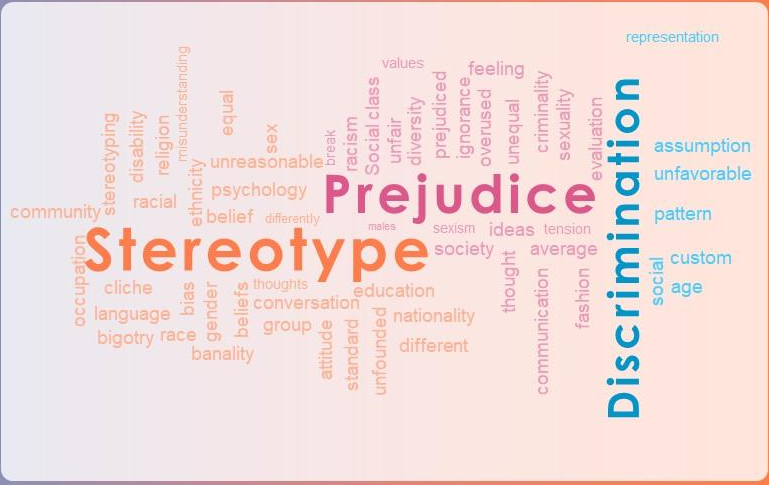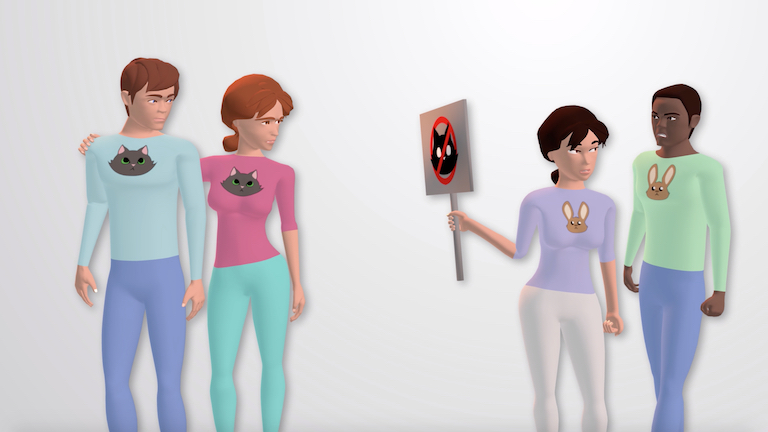Prejudice, Discrimination, and Stereotyping
Prejudice, discrimination, and stereotyping are widespread issues that many individuals face both in India and beyond. They are predicated on inaccurate and rigid generalizations about people or groups according to their social identities, including language, caste, gender, race, religion, and so on. These unfavorable beliefs and actions have the ability to limit society's potential and diversity while also harming and unfairly treating their targets.
What are Prejudice, Discrimination, and Stereotyping?
Prejudice is an unjustified or incorrect attitude (usually negative) towards an individual or group based solely on their membership of a social group. For example, prejudice can be expressed as hatred, contempt, fear, or hostility towards a certain group of people.
Discrimination is the negative behavior or action against an individual or group based on their social identity. For example, discrimination can be manifested as exclusion, rejection, harassment, violence, or unequal treatment in various domains, such as education, employment, health, politics, etc.
Stereotyping is the cognitive process of assigning characteristics or traits to a group of people, often based on incomplete or inaccurate information. For example, stereotyping can be seen as a mental shortcut that simplifies our perception of others but also leads to errors and biases.
How can Prejudice, Discrimination, and Stereotyping be Controlled or Reduced?
There is no easy or quick solution to the problem of prejudice, discrimination, and stereotyping, but there are some strategies that can help in reducing or preventing them. Some of the effective ones are:
Education and Awareness: The process of dispelling the myths and misconceptions that underpin prejudices and stereotypes and offering truthful and impartial information about various groups of people. Knowledge and comprehension can be expanded, as well as critical thinking and empathy, through education and awareness. For example, if we learn about the history, culture, and achievements of different groups, we may appreciate their diversity and contributions and respect their rights and dignity.
Contact and Cooperation: Bringing individuals from various groups together and assisting them in constructively and meaningfully interacting and cooperating with one another. Cooperation and communication can foster friendship and trust while lowering animosity and fear. For instance, if we collaborate or study with individuals from various backgrounds, we might learn about their similarities and differences and grow to respect and value one another.
Social Norms and Laws: The process of creating, upholding, and ensuring that all members of a society or community are treated fairly and equally when it comes to laws and expectations of behavior. Social norms and legal frameworks can shape how individuals act, interact with one another, and receive rewards or penalties for their deeds. For instance, we might be more inclined to abide by and respect laws that forbid discrimination and advance equality than to break them and suffer the repercussions.





Great work of explanation of three important aspects of social psychology. The causes, the impact and the suggestions!!
ReplyDeleteGreat work!!
Fantastic effort, Team! Beautifully covered a variety of social psychology themes!
ReplyDeleteHi Shreyansh! I really liked reading your blog and it gave me a lot to think about. The way it explained prejudice, discrimination, and stereotyping made it easy to grasp the concepts. The breakdown of their causes, especially the role of social categorization, learning, identity, influence, and cognition, offered a more comprehensive perspective that I hadn't considered before.
ReplyDeleteThe strategies suggested for tackling these issues seem practical and doable. I totally agree that education and awareness are key in challenging stereotypes. The idea of encouraging contact and cooperation between different groups to foster understanding and respect really stuck with me. It makes sense that breaking down barriers can lead to positive change.
The emphasis on social norms and laws shaping behavior was a strong point for me. It underlines the importance of everyone committing to fairness and equality through both legal frameworks and societal expectations. I also appreciated the optimistic tone throughout your blog, framing these challenges as things that can be overcome with the right tools. It's encouraging and makes you feel like you can make a difference.
Overall, I think your blog is a valuable resource and the practical solutions it offers make it more than just informative. It serves as an invitation to actively contribute to the creation of a more welcoming and inclusive society.
~ Ayush Kumar Baranwal (2020CH10082)